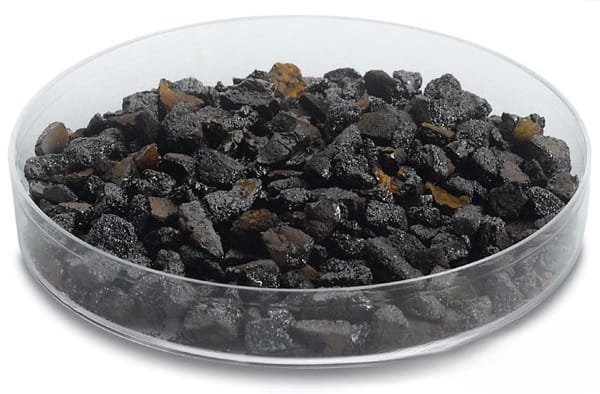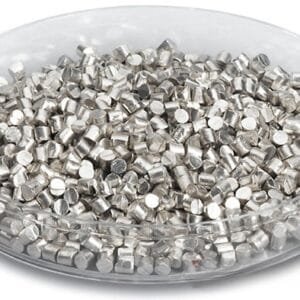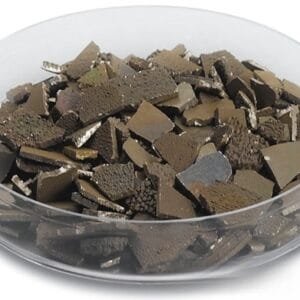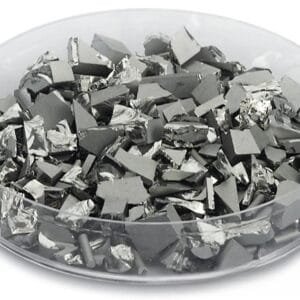Tantalum Boride Evaporation Materials Overview
TFM’s tantalum boride evaporation materials consist of a boride ceramic with the chemical formula TaB2. These high-purity TaB2 materials are crucial for deposition processes, ensuring the production of high-quality thin films. Our specialized manufacturing process guarantees materials with purity levels up to 99.9995%, supported by rigorous quality assurance to ensure product reliability.
Specifications of Tantalum Boride Evaporation Materials
| Material Type | Tantalum Boride |
| Symbol | TaB2 |
| Appearance/Color | Grey to black solid |
| Melting Point | > 3000 °C |
| Density | 11.15 g/cm3 |
| Purity | 99.5% |
| Shape | Powder/ Granule/ Custom-made |
Applications of Tantalum Boride Evaporation Materials
Our tantalum boride evaporation materials are used in various deposition processes, including:
- Semiconductor Deposition
- Chemical Vapor Deposition (CVD)
- Physical Vapor Deposition (PVD)
They are primarily applied in optics and are essential for:
- Wear Protection
- Decorative Coatings
- Displays
Packaging and Handling
TFM ensures that tantalum boride evaporation materials are clearly tagged and labeled for easy identification and quality control. We take meticulous care during storage and transportation to prevent any potential damage.
Contact Us
TFM is a premier manufacturer and supplier of high-purity tantalum boride evaporation materials. We offer various shapes such as tablets, granules, rods, and wires, and can provide customized forms and quantities upon request. Additionally, we supply evaporation sources, boats, filaments, crucibles, heaters, and e-beam crucible liners. For current pricing and additional information, please send us an inquiry.


 MSDS File
MSDS File



Reviews
There are no reviews yet.